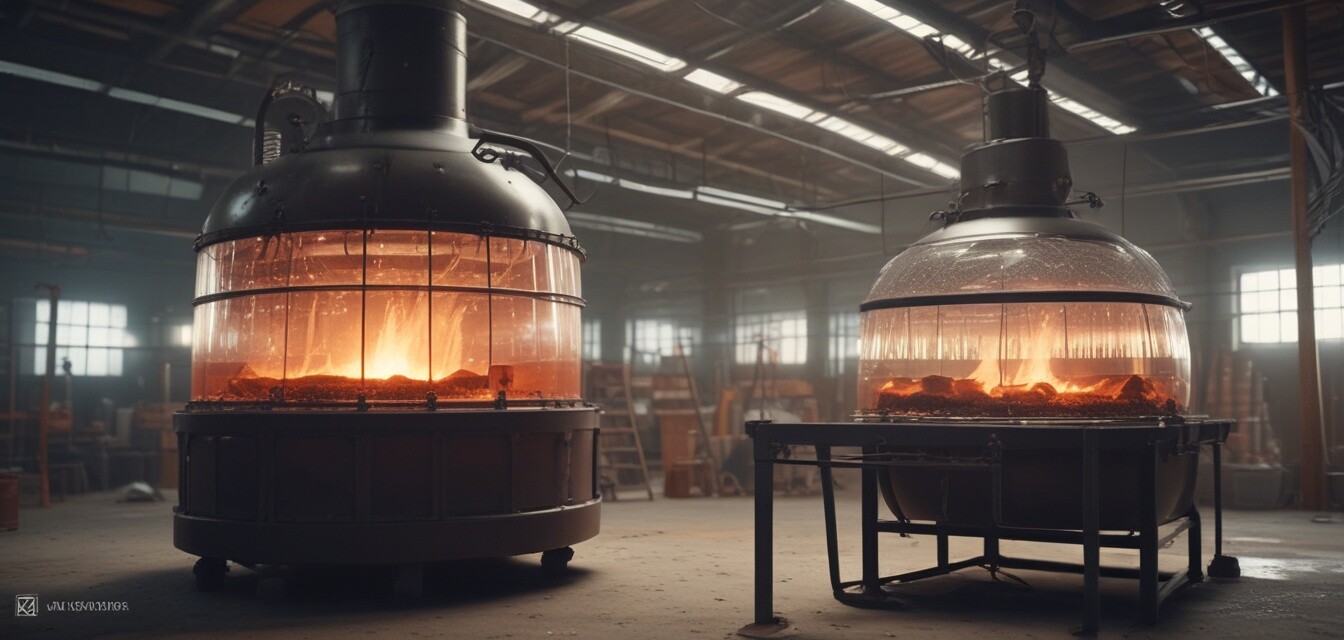
The Role of Convection in Kiln Performance
- Convection is a key factor influencing the uniform heating of glass in a kiln.
- Proper airflow can minimize defects in glass pieces and improve firing efficiency.
- Understanding convection helps in selecting the right kiln and optimizing its performance.
When it comes to creating stunning glass pieces, understanding the science behind your kiln is crucial. One of the most significant factors that impacts the performance of a kiln is convection. This article will delve deep into what convection is, how it affects your glass-making processes, and tips on optimizing your kiln's airflow.
What is Convection?
Convection is the process by which heat is transferred through the movement of fluids (in this case, air). In a kiln, hot air rises while cooler air descends, creating movement that is essential for even heating of your glass pieces. This process is vital for ensuring that the temperature is consistent throughout the kiln chamber, allowing for effective glass fusing, slumping, and casting.
The Importance of Airflow in Kilns
Airflow plays a critical role in the performance of any kiln. Here are some key reasons why it is essential:
- Uniform Heating: Proper airflow helps in maintaining consistent temperatures across all areas of the kiln, which is crucial for quality glass-making.
- Minimizing Defects: Without adequate convection, you may encounter defects such as bubbles or uneven surfaces in your finished glass.
- Improved Firing Efficiency: Optimal airflow can enhance energy efficiency, reducing the overall cost of firing your glass pieces.
How Convection Affects Glass Quality
The quality of your glass is closely tied to how well your kiln manages convection. Inconsistent heating can lead to a range of issues:
| Issue | Description |
|---|---|
| Bubbles | Bubbles can form when glass is heated unevenly, trapping air inside the material. |
| Cloudiness | Inconsistent temperatures can create areas of cloudiness or milky patterns in the glass. |
| Warping | Improper heating may cause the glass to warp, distorting its intended shape. |
Optimizing Airflow in Your Kiln
Here are some tips to help you optimize airflow and enhance the efficiency of your kiln:
Beginner's Tips for Optimizing Airflow
- Ensure proper clearance around the kiln to facilitate air movement.
- Introduce fans or ventilation setups to help circulate air effectively.
- Regularly check filters and vents to prevent blockages.
- Experiment with different kiln settings to identify the best conditions for your glass types.
Types of Kilns and their Convection Mechanisms
Different kilns may use various designs to enhance convection:
| Kiln Type | Convection Mechanism | Best Use Case |
|---|---|---|
| Top-loading Kiln | Natural convection; heat rises from the bottom. | Ideal for beginners and small projects. |
| Front-loading Kiln | Enhanced airflow systems integrated. | Best for advanced glass artists and larger batches. |
| Benchtop Kiln | Compact design; effective heat distribution. | Great for small-scale, intricate designs. |
Common Problems Related to Convection
It's crucial to be aware of common issues that may arise due to poor convection:
- Inconsistent heating: Check for cold spots frequently.
- Longer firing times: A poorly ventilated kiln may require extended firing cycles.
- Excessive energy consumption: If your kiln takes longer to heat, it could lead to higher energy bills.
Conclusion
Understanding the role of convection in kiln performance is essential for producing high-quality glass pieces. By optimizing airflow and ensuring even heating, you can minimize defects and maximize the efficiency of your kiln. Explore more about glass kilns to find the perfect fit for your needs and enhance your glass-making journey.
Pros
- Enhances quality of glass pieces
- Increases firing efficiency
- Allows for consistent heat distribution
Cons
- Requires regular maintenance to ensure airflow
- Initial setup costs can be high

